Focus on: Japanese street food
If you love Japan you surely love its culture for food and in particular Japanese street food.
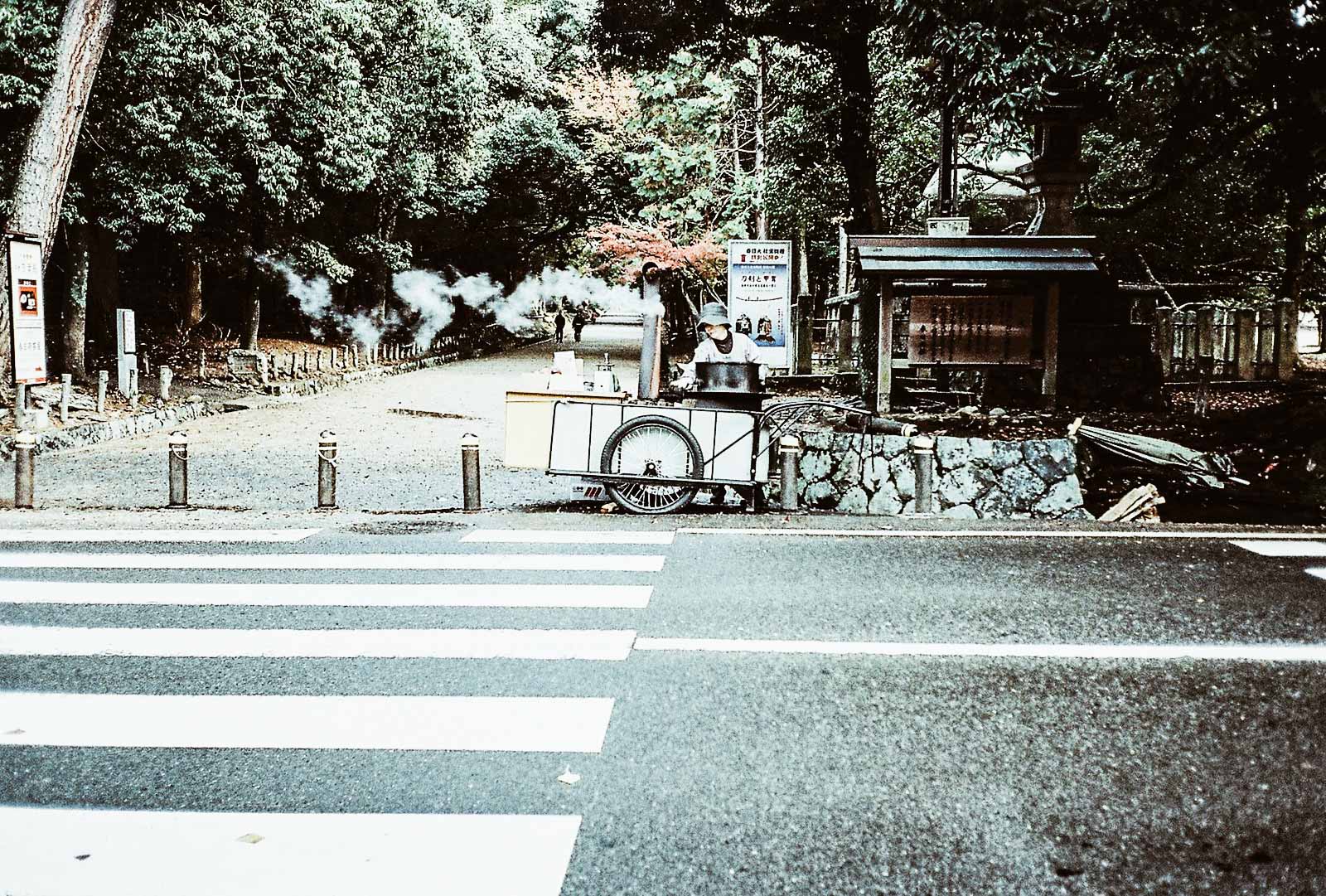
photo credit: jackwilson
Perfumes, colors and flavors mix on the streets of Japan. Whether it’s special events or an ordinary day, the traditional street food stalls, commonly called Yatai, offer culinary wonders. Sweet or savory, these delicacies are not normally found in restaurants or have a much more intense taste cooked by the street vendor.
All the tasty on-the-go dishes are particularly cheap, but always of the highest quality. The selection that the Yatai offer often varies between the seasons and also between the regions of Japan. Despite this, the list of delicacies is so vast that I prefer not to dwell on talk: let’s start this special sensory journey immediately!
Some of the most famous street food

photo credits: jmettraux
Okonomiyaki
Especially widespread in Osaka it is also known as “Pizza of Osaka”. The お好み焼き literally okonomi = what you want, yaki = grilled, is the Japanese version of a classic pancake. However this dish is not sweet but based on cabbage flakes, flour and eggs, with the addition of ingredients like meat and fish. Everything is cooked on a hot plate. There are variations in Hiroshima and Tokyo, but this sort of “omelette” has become famous also thanks to the anime “Ai shite Naito” (愛してナイト), known by us as “Kiss Me Licia”. Do you remember Yaeko’s father (Licia), Shige-San (for us Marrabbio)? In fact, he was the owner of the okonomiyaki-ya, the typical okonomiyaki restaurant!
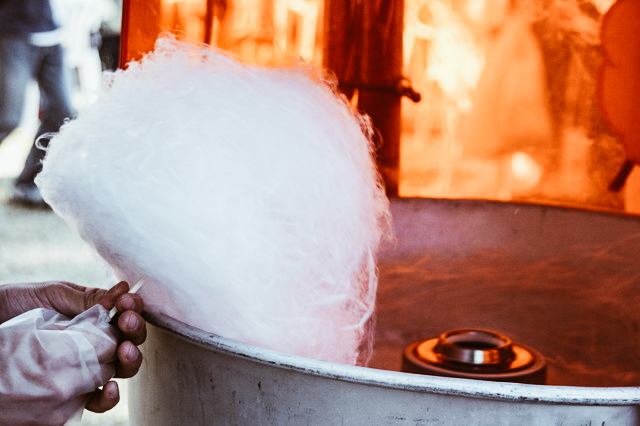
photo credits: favy-jp.com
Wataame
Imagine being able to eat a soft cloud and you will have Wataame or Watagashi (綿あめ), the sweet Japanese cotton candy. This simple delicacy loved above all by children can be found everywhere. In fact we find them at the Yatai, where you can see their realization, or buy it ready-made and packaged in colorful packages and often decorated with manga characters.
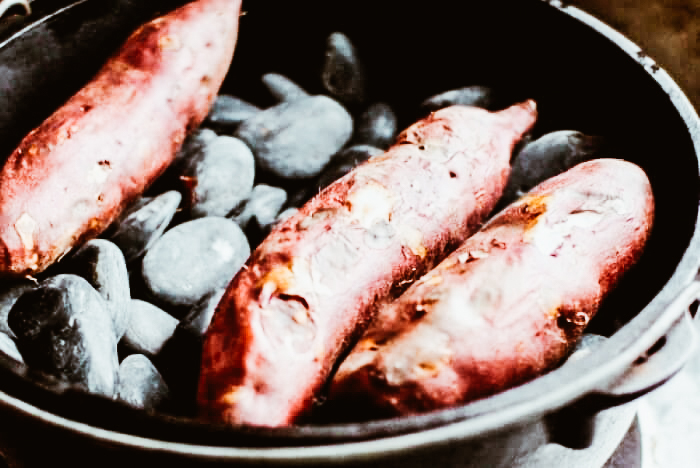
photo credits: jpninfo.com
Yaki Imo
Yakiimo or Ishi Yaki Imo (焼き芋/石焼き芋) is a small authentic autumnal treasure of the Japanese tradition. Made with satsuma-imo, a Japanese sweet potato with a caramel flavor, it cooks in a wood-fired oven and is served wrapped in brown paper. It is easy to identify the yatai that offers this specialty. In fact, if you prick up your ears, you can hear songs that spread through the streets to attract customers!
Long ago, yaki imo ya san (焼き芋屋さん, as they are called roast potato vendors) crossed the city streets with carts. However, today it is easier to see them moving on small trucks.
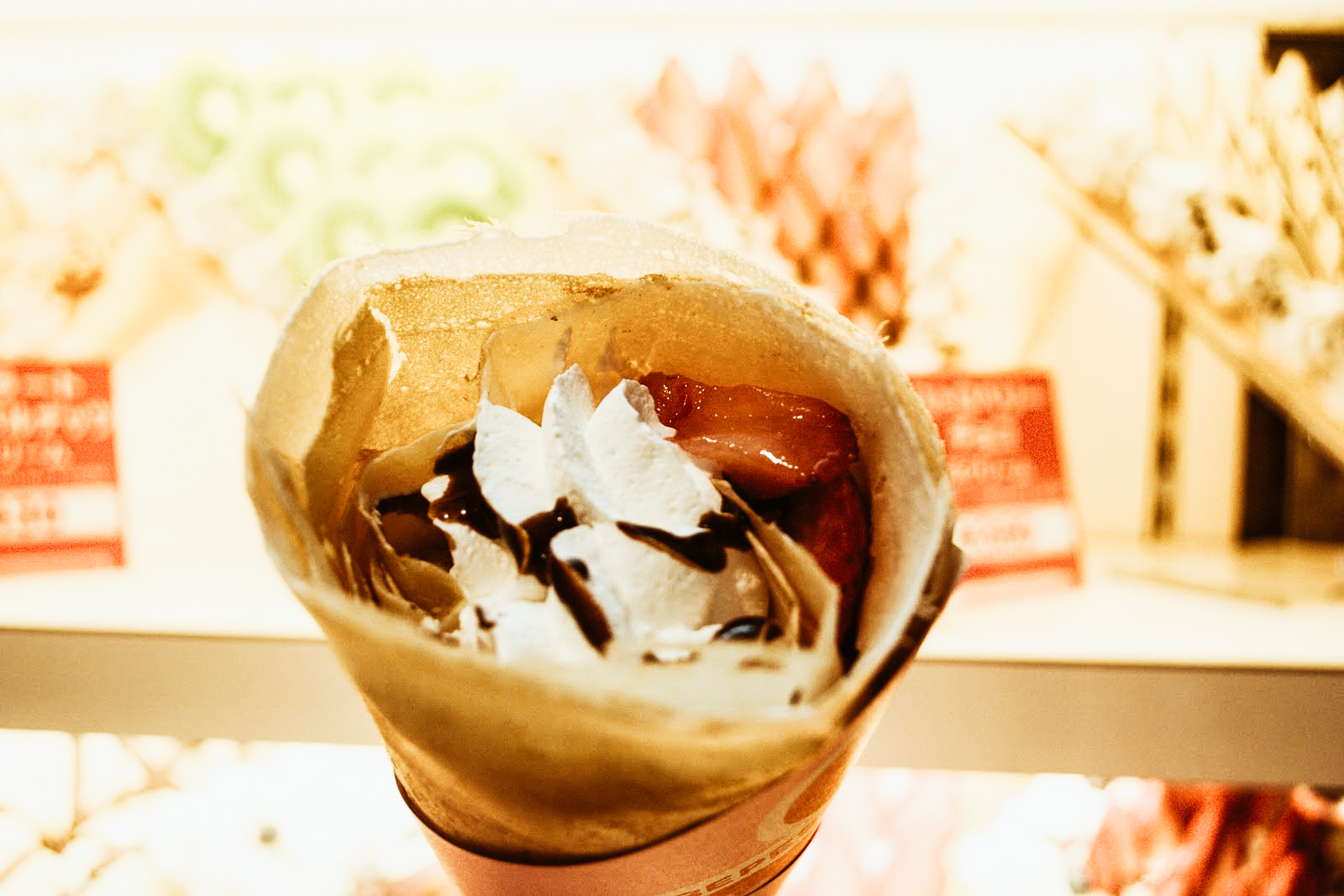
photo credits: littlejapanmama.com
Crepes
The crepes, originating from France, soon spread also in the Rising Sun. in fact, towards the end of the 1970s, they became the sweet snack on the go, especially in the Harajuku district. The classic batter is cooked on the hot plate and filled with nama kurimu (delicately sweet whipped cream), chocolate, ice cream and fruit, variegated with various syrups, folded into the typical cone shape and served wrapped in paper for easy consumption.

photo credits: nonilo.com
Imagawayaki
Imagawayaki (今川焼き) is a dessert that is often found for sale at festival stalls. Based on the region its name varies in Ooban yaki (大判焼き) or Kaiten Yaki (転焼き). However, “wagashi” (和菓子) is the original name of this dessert that spread during the Edo period. The batter, made from flour, eggs and water, is poured into a special plate and filled with red beans (azuki). Over time, many variations have become widespread that provide a wide variety of fillings. In fact we can find vanilla cream, cream and fruit jams, curry, meat, vegetables and potatoes.
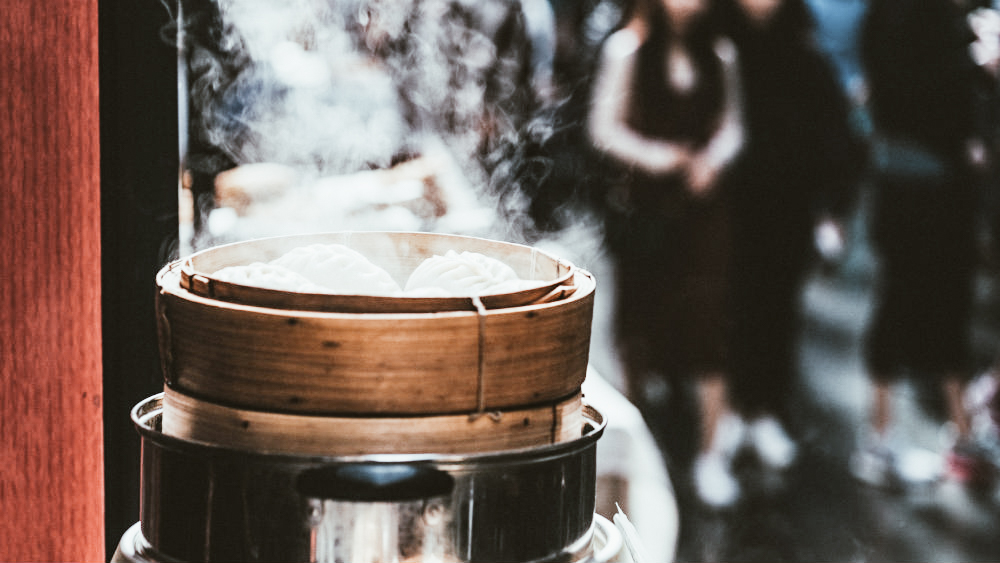
photo credits: italianfoodacademy.com
Nikuman
These irresistible round rolls stuffed with meat (niku) usually pork (buta) and steamed, are an institution in Yokohama! Their name however varies from Nikuman (肉まん) in the Kanto region to Butaman (豚まん) in the Kansai region. Savored alone or accompanied by soy sauce, they are a perfect snack, a must try!
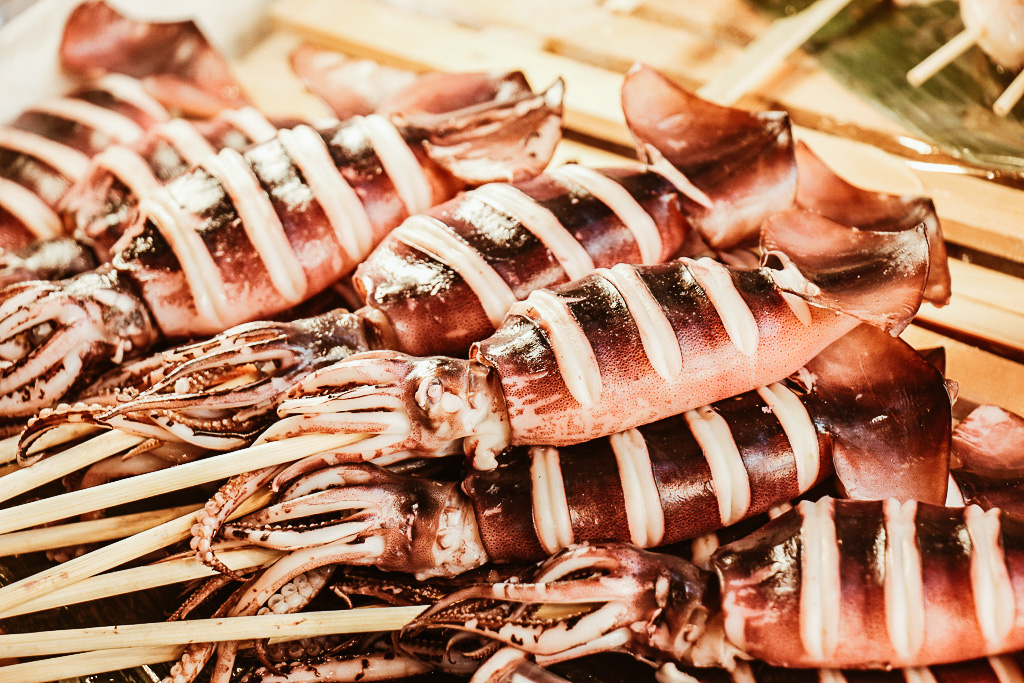
photo credits: jetsettingfools.com
Ikayaki
Ikayaki (いか焼き, イカ焼き or 烏賊焼, baked or grilled squid) is one of the Japanese’s favorite street snacks! They are usually accompanied with soy sauce, teriyaki or a traditional sauce that typically includes rice wine, miso paste, ginger and soy sauce. What makes these squids tender and plump is their quick preparation and are served immediately off the grill.
Finding ikayaki is quite simple: local markets, shrines and festivals always offer this delicacy!
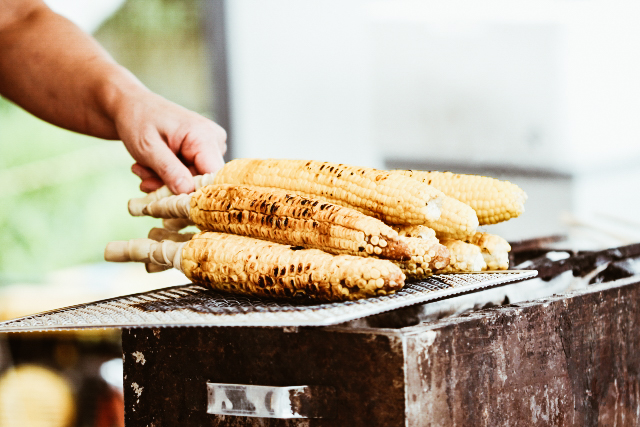
photo credits: zojirushi.com
Yaki Tomorokoshi
In Japan, Yaki Tomorokoshi (焼きうもろこし) is one of the seasonal street food that can be found at fairs and during festivals. It consists of a grilled panicle, covered with a mixture of sweet soy sauce and spicy pepper.

photo credits: favy-jp.com
Choco Banana
An extremely simple yet unique dessert: choco bananas are a must for Japanese festivals! Delicious frozen bananas covered with any kind of chocolate and decorated with sugar or hazelnut grains. Serve on a stick, the choco bananas can make us westerners smile thanks to their equivocal shape, but once you taste them you won’t be able to do without them!
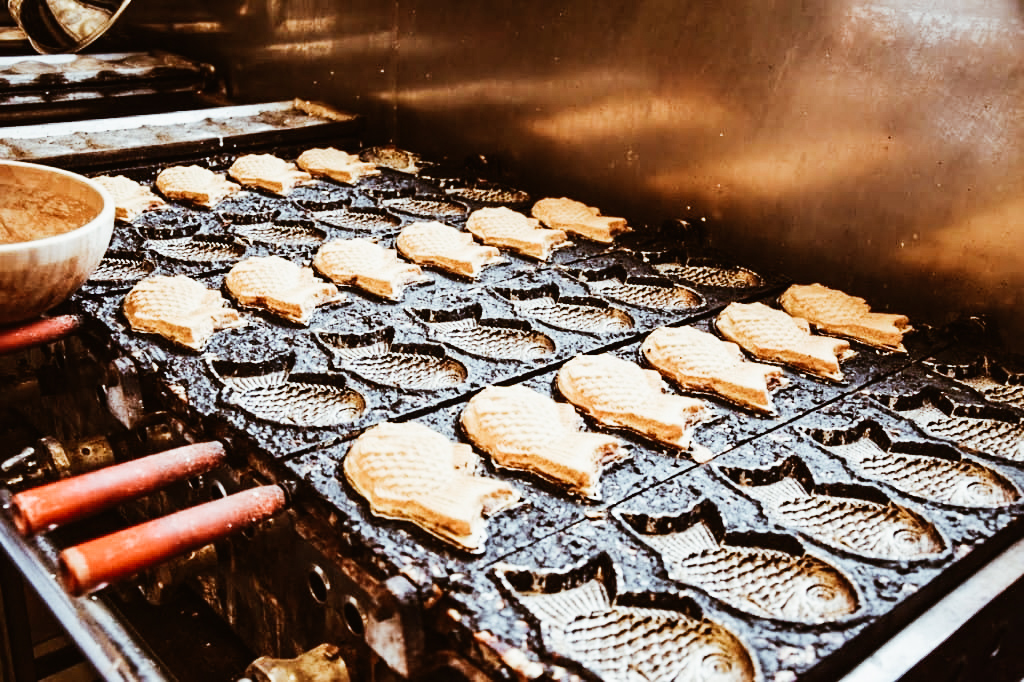
photo credits: matcha-jp.com
Taiyaki
The paradisiacal scent of Taiyaki (たい焼き) is unique and it is impossible to resist it! Their shape is typical “a pesce” (“tai”, stuffed with cream of red beans or cream, but also many seasonal variations such as sweet potatoes and chestnuts!
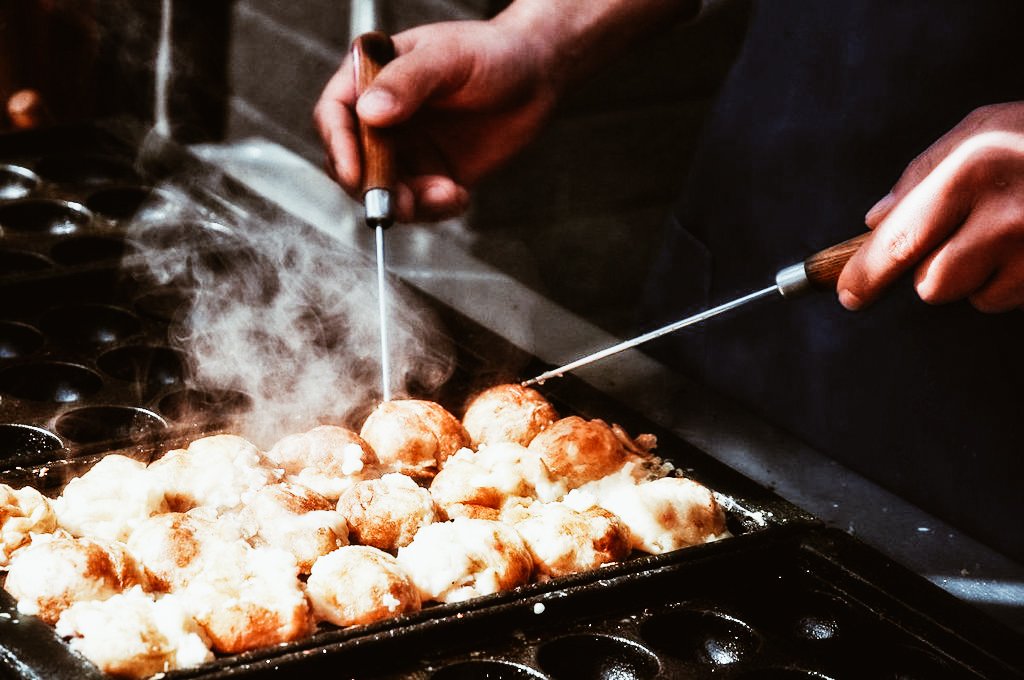
photo credits: Hayley Casarotto
Takoyaki
Takoyaki (たこ焼き fried or grilled octopus) are fried balls of batter filled with octopus, green onions, ginger and pieces of tempura. They are then seasoned with an Otafuku sauce, minced aonori seaweed, mayonnaise and katsuobushi (dried and smoked striated tuna flakes). It is a specialty of Osaka cuisine, but the sellers of these delights can be found in almost every country.
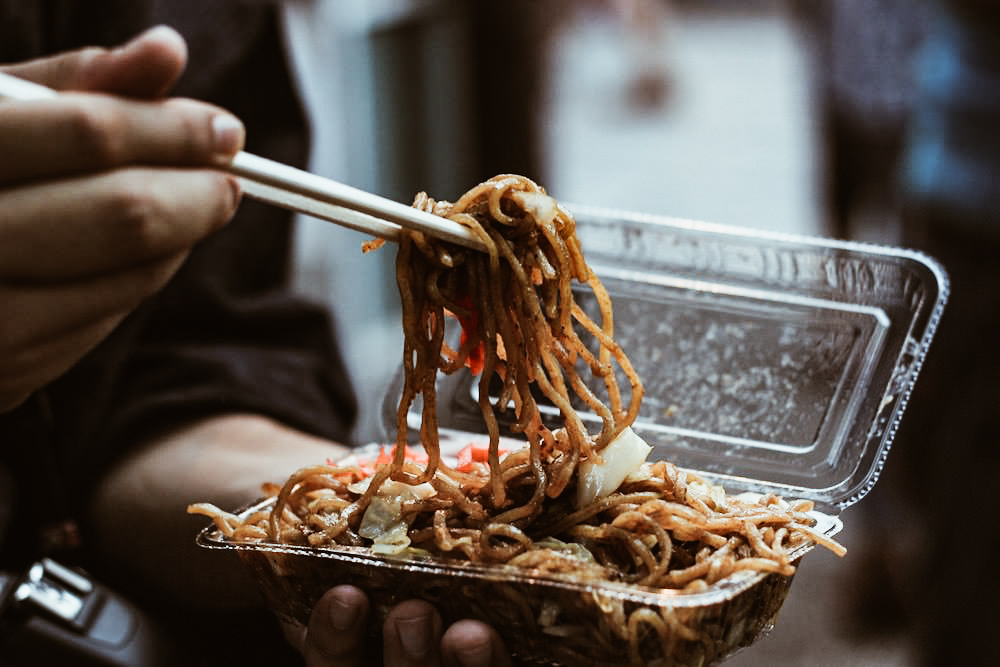
photo credits: hubjapan.io
Yakisoba
Yakisoba (焼きそば, sautéed spaghetti) are one of the quintessential comfort-foods of Japanese cuisine and one of the best-selling snacks from stalls during festivals! The dish consists of stir-fried noodles with pieces of pork. Accompanied by various vegetables such as cabbage, carrots and onions and seasoned with a special sauce that gives them the typical spicy flavor. On the street you can even find them served in a hot-dog style inside a sandwich and seasoned with mayonnaise and pickled ginger!
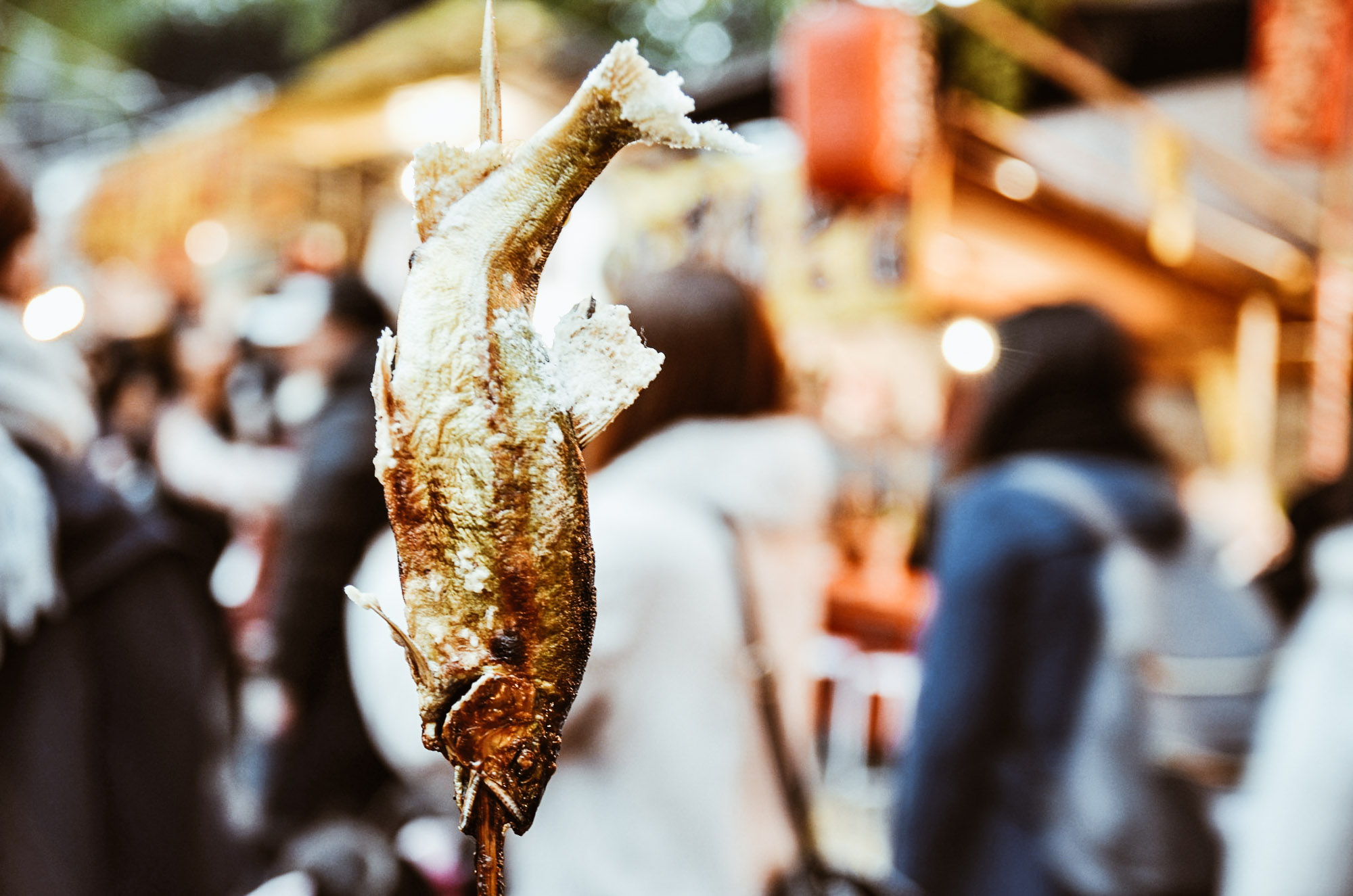
photo credits: pellgen (@1179_jp)
Ayu No Shioyaki
The Ayu no Shioyaki (鮎の塩焼き) are pieces of typical Japanese fish grilled and seasoned only with salt. These are then impaled on the skewer and represent a summer must that recalls the peace and energy of the rivers.

photo credits: e-sumida.gr.jp
Kare Pan
Kare pan (カレーパン) is an unusual and tasty snack consisting of Japanese curry wrapped in a slightly sweet, breaded and fried dough. The curry used is very different from what we know here in the West. In fact, it is dark in color and has a more delicate flavor that is well suited to this particular recipe.
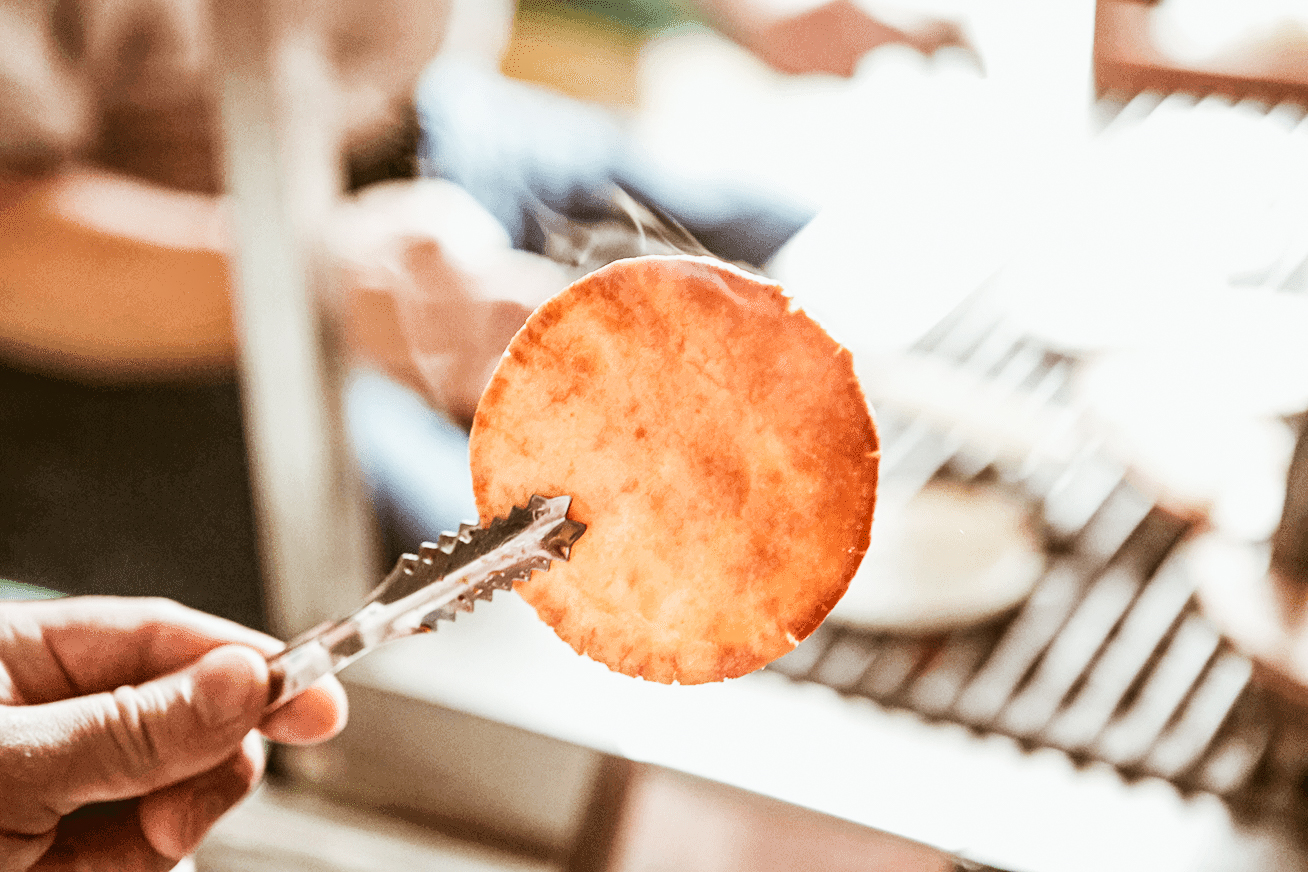
photo credits: e-sumida.gr.jp
Senbei
A charcoal grill, rice flour, water and a myriad of flavors are the foundations of Senbei (せんべい). Also known as Japanese rice crackers, nobody can resist. Sweet or savory, the crunchy senbei are of various shapes and sizes and for 300 yen. A must try snack!

photo credits: M’s photography
Dango
Outside the Shintoist temples, the dango vendors (団子) peep! These firm, round glutinous rice flour and water dumplings are typically served on a skewer and there are different types. An-Dango are the most popular in Japan based on sweetened anko. Instead, Bocchan Dango are the most famous and aesthetic. In fact, we are used to seeing them almost everywhere online and in Anime. They are available in 3 colors: the first is colored by red beans (red), the second by eggs (Yellow), and the third by green tea (green).
The Chichi dango instead are slightly sweet, while the Goma dango have sesame seeds and can be either savory or sweet. Then we pass to the Kinako dango based on toasted soy flour and to the Mitarashi dango covered with a glaze of sweet soy sauce.
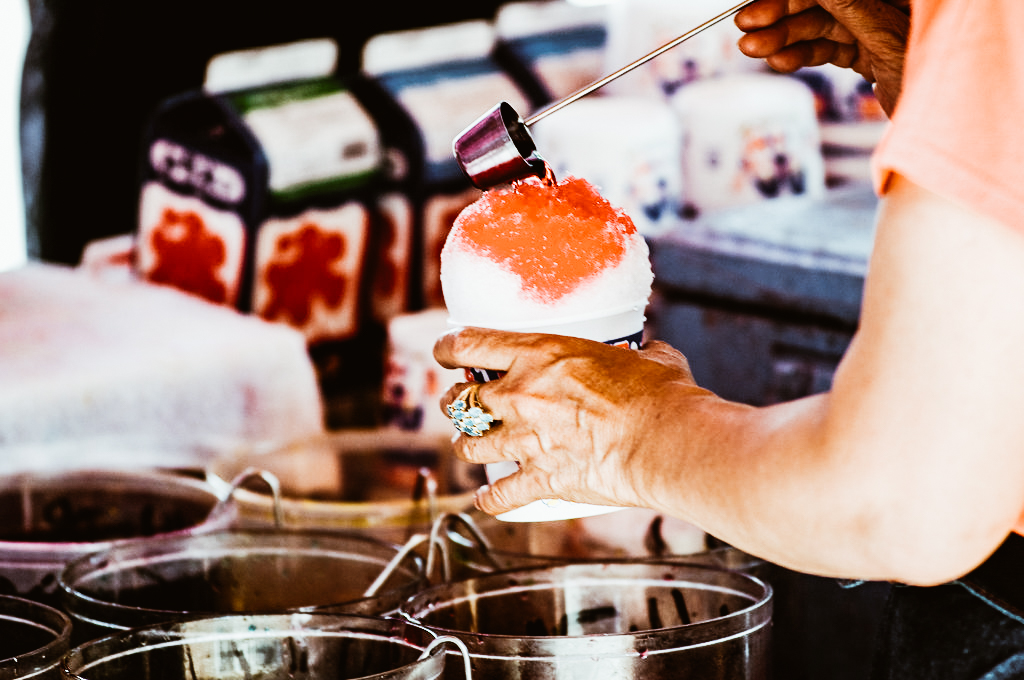
photo credits: Justin C.
Kakigōri
It would be a heresy to define kakigōri (き氷) as a granita: it is something more special, with a soft consistency like snow! The chopped ice is flavored with a fruity syrup (strawberry, cherry, lemon, green tea, grapes, melon, sweet plum) and sweetened with condensed milk. There is an original version of Kagoshima, the shirokuma (白熊, literally “polar bear”), flavored with condensed milk, small colored mochi, fruit (mandarin, cherry, pineapple and raisins) and sweet bean paste (azuki).
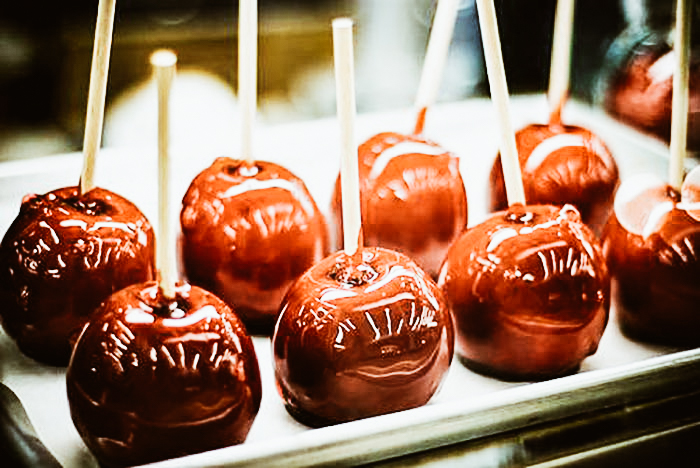
photo credits: yutaka.london
Candy Fruits
Candied fruit is among the most widespread on the roads of the Rising Sun. Ichigo Ame (candied strawberries), Mikan Ame (candied Japanese mandarin), Ringo Ame (candied apples) and Anzu Ame (candied apricots) are irresistible. If you are a sweet lover you cannot miss it. Juicy fruits dipped in caramelized syrup and skewered by a skewer to be eaten on-the-go while your eyes are filled with the wonders of Japan!
These street foods are only a hint of all that Japan can offer. However, if you get hungry while you are walking down the street because a good smell has tempted you, then do not hesitate! Run to taste these specialties and let us know what you think!
Share this:
- Click to share on Facebook (Opens in new window)
- Click to share on Twitter (Opens in new window)
- Click to share on Tumblr (Opens in new window)
- Click to share on Pinterest (Opens in new window)
- Click to share on Telegram (Opens in new window)
- Click to share on WhatsApp (Opens in new window)
- Click to share on Reddit (Opens in new window)
- Click to print (Opens in new window)






